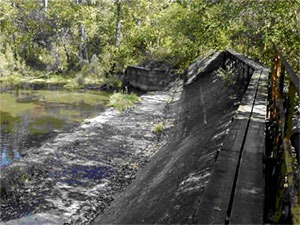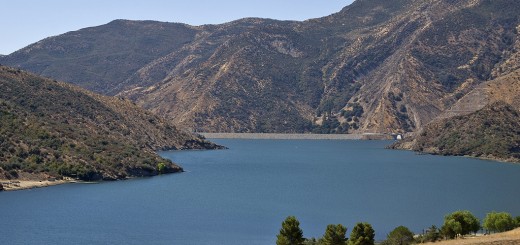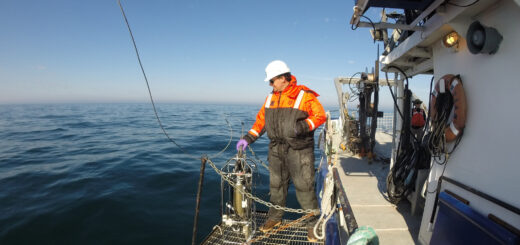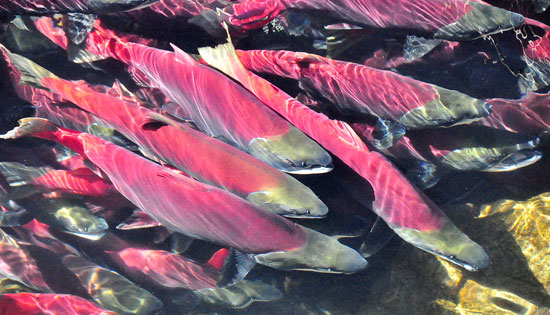Scientists Study Massive Fish Kill at Helms Lake
0
Fish kill. (Credit: U.S. Fish and Wildlife Service via Wikimedia Commons)
After 3,000 fish went belly up in Helms Lake at Sparks Marina Park in Nevada, biologists went looking for answers. They soon found that low oxygen levels in one corner of the lake were to blame. That was in December 2013. Just one month later, the lake has lost more than 100,000 fish – including trout, bass and catfish.
But those are just estimated numbers. Officials at the Nevada Department of Wildlife say that nearly 1 million adult fish have been stocked in the lake since its formation. The lake is relatively young, beginning as a gravel pit that was filled after the nearby Truckee River overflowed in 1997. The pit was part of a Toxic Superfund Site before its revitalization.
After the mass die-off, scientists gave the lake a look-see, going out on the water to check oxygen levels. Low DO concentrations were found at 11 sampling locations. They were in the range of 1.1 to 1.9 parts per million, well below the 5 ppm minimum most fish require. And an electronic fish-finder captured no sign of fish moving in the lake.

Helms Lake at Sparks Marina Park. (Credit: City of Sparks, Nev.)
So what brought about the super-low oxygen?
Sudeep Chandra, a limnologist at the University of Nevada, points to a few possible causes:
-
A long, hot summer spurred algae growth – more algae would consume more oxygen in the water, leaving less for fish;
-
or oxygen-rich, warm water at the surface cooled too quickly, causing a rapid lake turnover.
Many Nevada scientists agree, saying a week of cold temperatures in December probably triggered a turnover that brought oxygen-depleted water to higher levels in the lake.
Oxygen levels played a role in the massive fish kill, but the exact mix of factors may take some time to sort out. A combination of turnover and algae growth could be to blame. The lake’s history as a Toxic Superfund Site is also suspicious. But state officials say there hasn’t been a trace of contaminants since the pit was remediated in 1996.
Whatever the cause, there won’t be much fishing in the lake for some time. The Nevada Department of Wildlife stocks the lake in February or March each year, but won’t add any new fish until DO levels are back to normal. Officials say tens of thousands of dollars will be needed to rebuild the fishery at Helms Lake.













